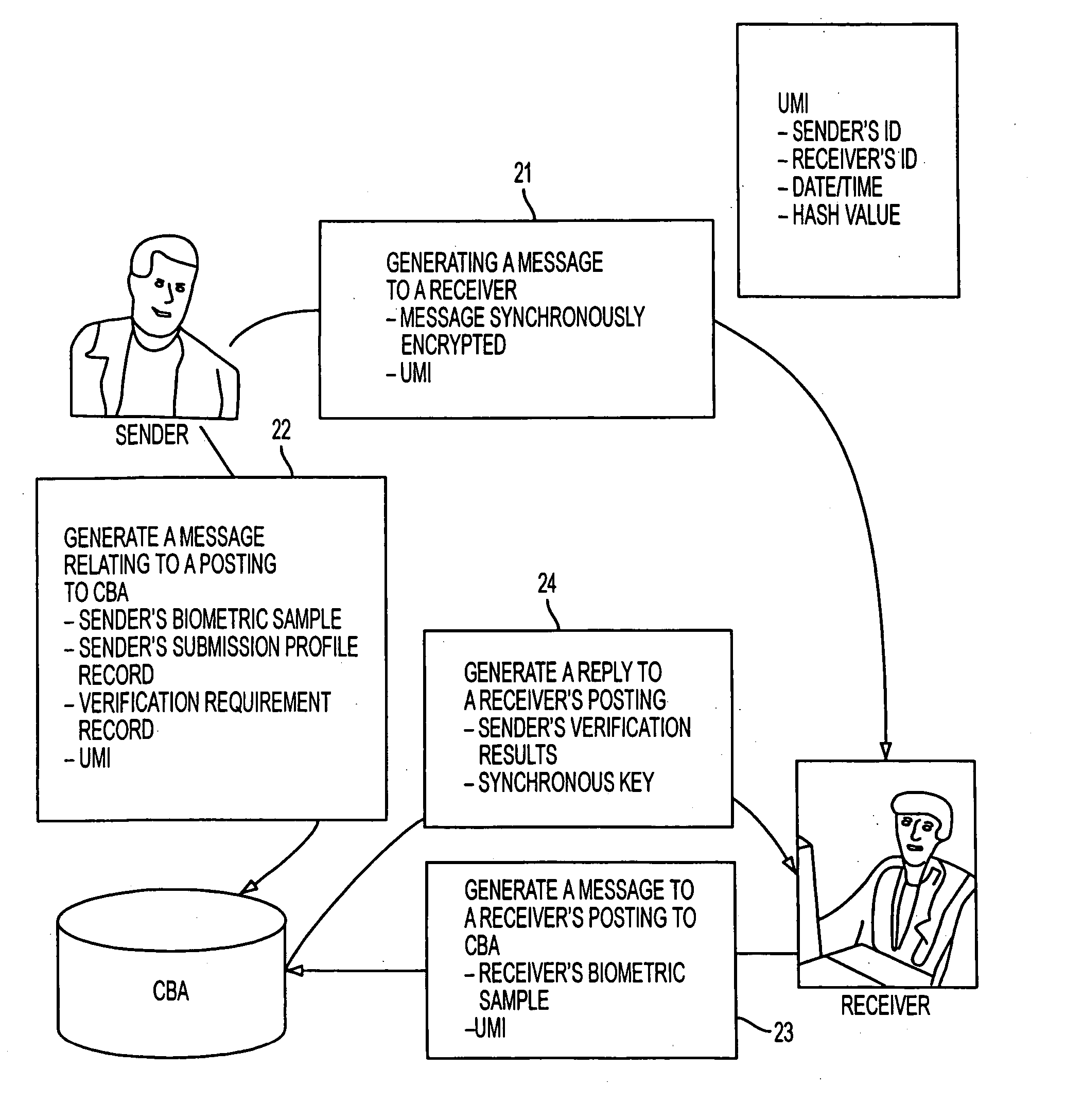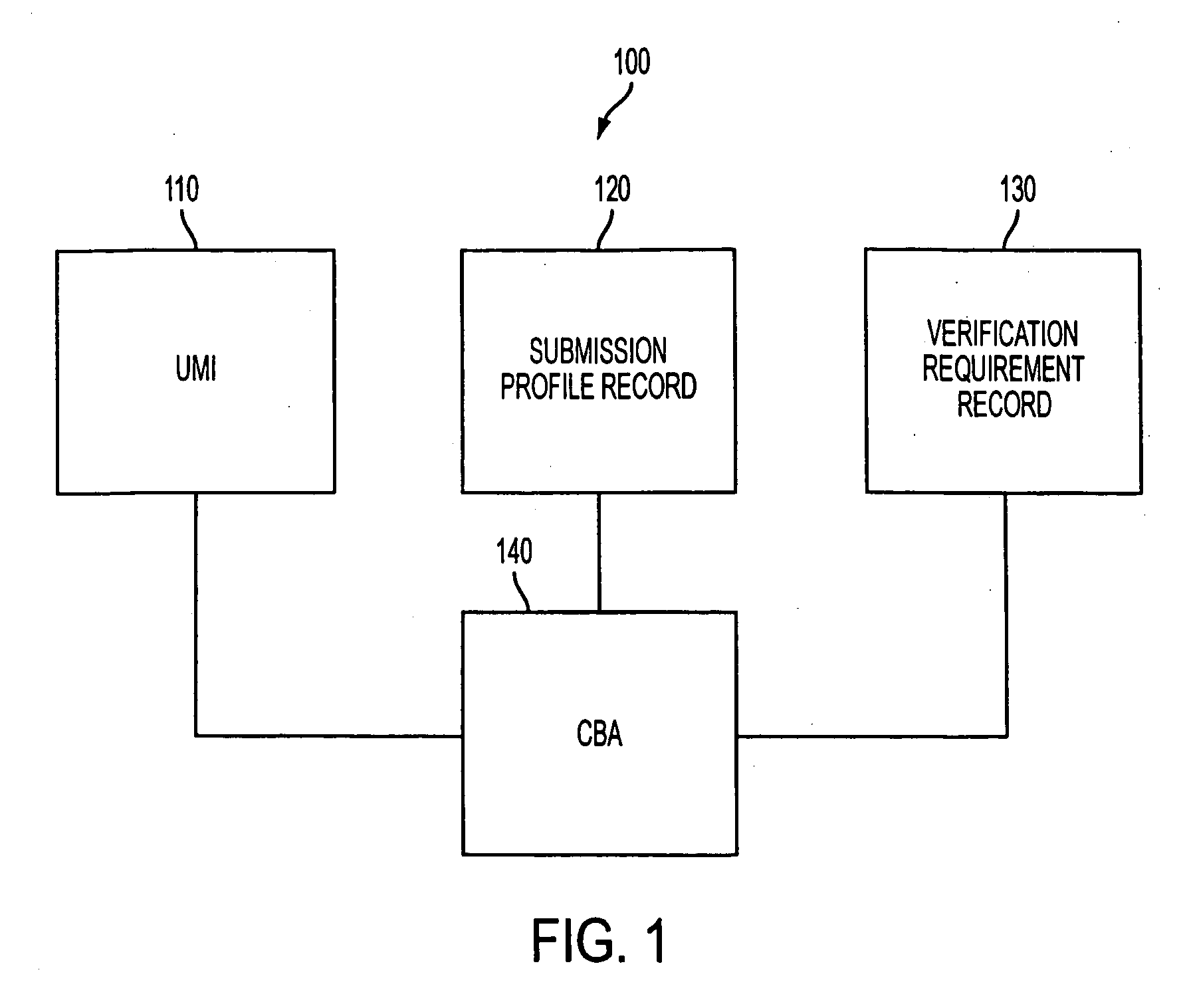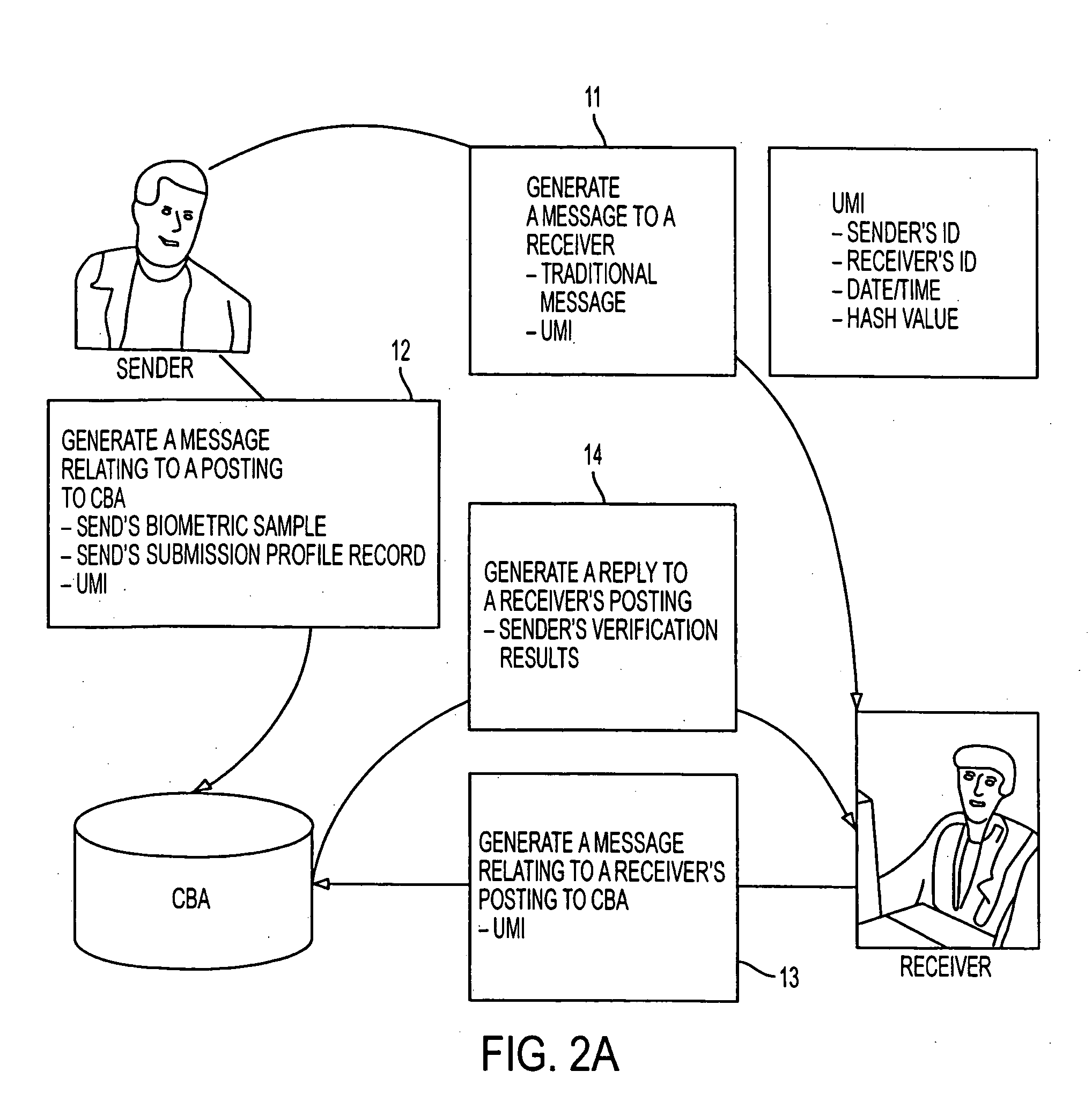Identity verification method using a central biometric authority
a biometric authority and identity verification technology, applied in the direction of public key infrastructure trust models, instruments, digital transmission, etc., can solve the problems of inability for users to remember or input long keys, preventing the success of brute force attempts, and compromising secret codes by brute force attacks, etc., to achieve the effect of improving the performance of an identity verification system
- Summary
- Abstract
- Description
- Claims
- Application Information
AI Technical Summary
Benefits of technology
Problems solved by technology
Method used
Image
Examples
first embodiment
[0041] Specifically, in the present invention, a method to verify the identity only of the sender of a message is described. A sample transaction is a customer sending a message to their bank to wire transfer money into their stockbroker's account.
[0042] With reference to FIG. 2A, at step 11, a sender generates a message to a receiver. The message includes the substantive message? and the UMI.
[0043] Meanwhile, at step 12, the sender generates a message relating to a posting to the CBA. This message includes the sender's biometrics sample, the UMI, and the sender's is submission profile record. At step 13, it is necessary to take place only if the receiver desires verification of the sender's identity. In many cases (low risk level involved with message communication, low chance of suspected fraud, junk e-mail, etc.) this verification may not be desired, and the CBA process may never be completed. In this case, the step 12 will remain “unclaimed”. An aging off to expiration scheme c...
second embodiment
[0044] With reference to FIG. 2B, the invention is provided, wherein a method to verify the identity of both the sender and the receiver of a message is described. A sample transaction is someone sending a secure message to an important client. To accomplish this, a synchronous or secret key is created for the transaction by the sender, and held from the receiver until they have been biometrically identified to the satisfaction of the sender.
[0045] Specifically, at step. 21, a sender generates a message to a receiver. The message includes the substantive message encrypted with a synchronous key and the UMI.
[0046] Meanwhile, at step 22, the sender generates a message relating to a posting to the CBA. This message includes the sender's biometrics sample, the UMI, the sender's submission profile record, the synchronous key used in step, and the verification requirements record. At step 23, the receiver generates a message relating to a receiver posting to the CBA including the UMI, as...
third embodiment
[0047] Referring now to FIG. 2C, the invention is given, wherein a method to verify the identity of a person presenting themselves to complete any face-to-face transaction (authorized transactor or AT). A sample transaction is a credit card transaction at point of sale, a cash withdrawal at an ATM or teller window, or someone picking up their car at the mechanics shop.
[0048] Specifically, at step 31, at a point of transaction (POT) the POT operator (e.g., cashier) issues a message relating to a POT posting to CBA. This message includes the authorized transactor (AT)'s claimed identity, the AT's biometric sample and the POT submission profile record. At step 32, the CBA compares the biometric sample from the step 31 to that registered on the AT and generates the reply to the POT posting. This message includes only the AT's verification score / rating.
PUM
 Login to View More
Login to View More Abstract
Description
Claims
Application Information
 Login to View More
Login to View More - R&D
- Intellectual Property
- Life Sciences
- Materials
- Tech Scout
- Unparalleled Data Quality
- Higher Quality Content
- 60% Fewer Hallucinations
Browse by: Latest US Patents, China's latest patents, Technical Efficacy Thesaurus, Application Domain, Technology Topic, Popular Technical Reports.
© 2025 PatSnap. All rights reserved.Legal|Privacy policy|Modern Slavery Act Transparency Statement|Sitemap|About US| Contact US: help@patsnap.com



